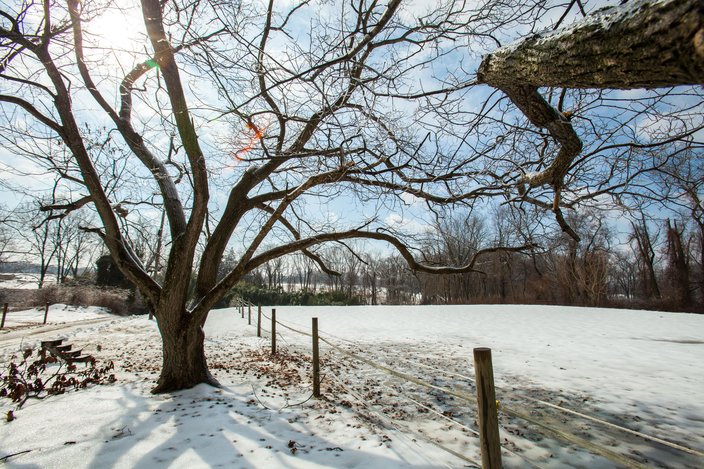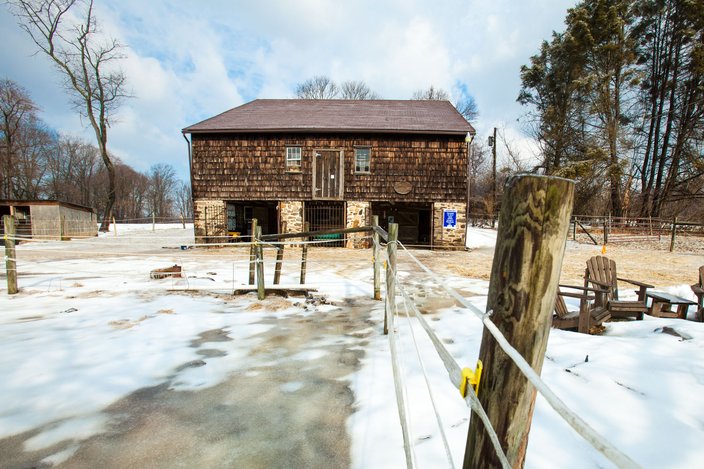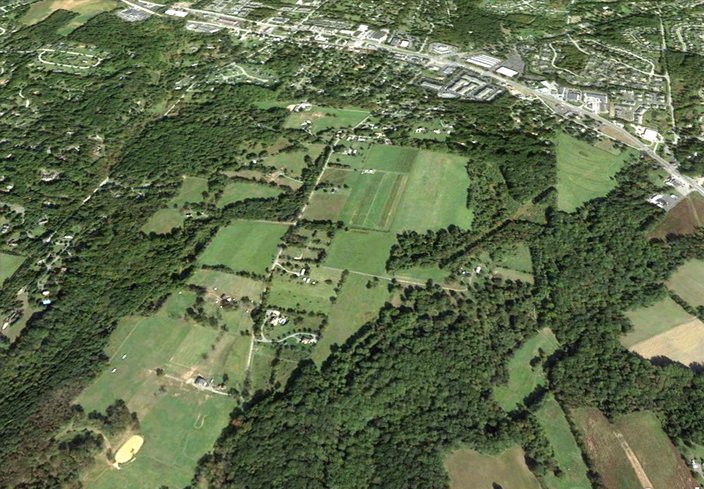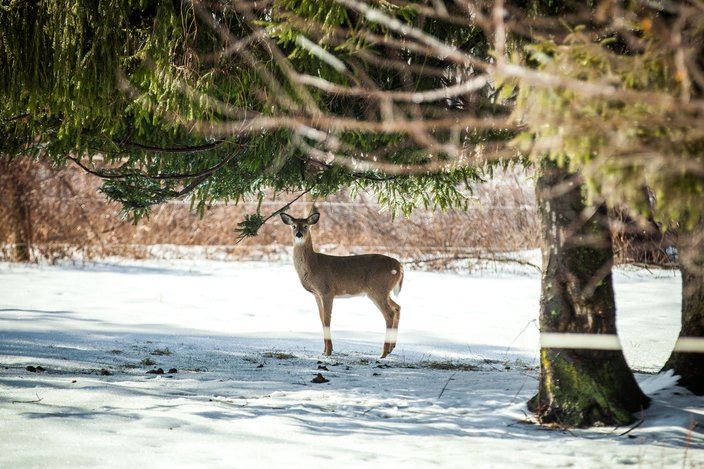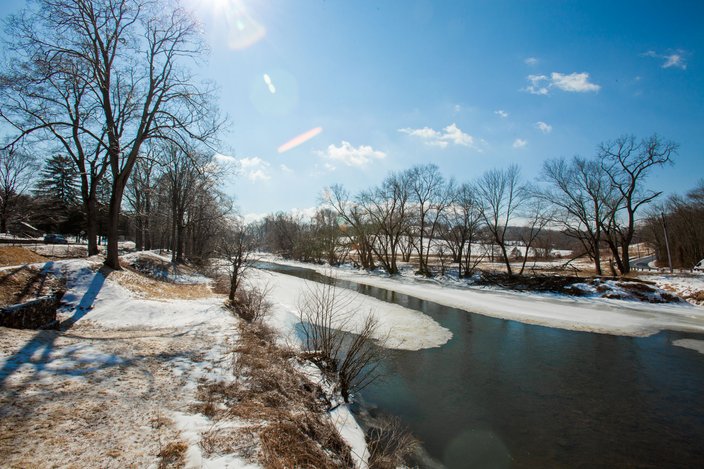A scenic valley known for its rolling pastures, natural forests and glistening streams has served as a decades-long hotspot for suburban hikers, bikers and horseback riders.
Beaver Valley, which straddles the Pennsylvania and Delaware border, includes thousands of acres of open space filled with trails.
A sizeable portion of that land in Delaware County may be heading for development, a possibility that has sparked nearly three years of strife between the developers and several-hundred community members.
Eastern States Development, of Wilmington, Del., and McKee-Concord Homes LP, of Springfield, seek to construct 163 houses on a 230-acre parcel bordering First State National Historic Park. Several community groups have ardently voiced their opposition, even hiring an attorney to fight the proposal.
A judgment on the development – dubbed Vineyard Commons – is expected Tuesday night, when the Concord Township board of supervisors considers the preliminary plans at a public meeting.
With the exception of a small vineyard on the adjacent hillside, all of the land visible in this photograph - as well as hundreds of acres behind the camera, would be developed for the Vineyard Commons project. (Thom Carroll / PhillyVoice.com)
THE HISTORY OF BEAVER VALLEY
Much of Beaver Valley is – or was – owned by
Woodlawn Trustees, a nonprofit real estate company dedicated to preserving open space, orderly development and affordable housing.
William Bancroft, a Wilmington businessman, established Woodlawn in 1901, purchasing thousands of acres north of the city. His goal was to strategically develop the properties while also preserving open space for generations to come.
The undeveloped properties have been open to the public for years.
“There’s a park here and there but Beaver Valley is the only large piece of open space that’s left in the area,” said Jason Hoover, executive director of Save The Valley, an organization fighting development in Beaver Valley. “The views are just breathtaking. It’s so old, too. There are buildings older than the country. … People just flock to it.”
Woodlawn has sold a significant chunk of its land in recent years, including 1,100 acres that were preserved as First State National Historic Park, which initially opened as a national monument nearly two years ago.
But Woodlawn also is selling bordering properties to developers, including the property in Delaware County and another 41-acre property in Delaware.
Exactly how Woodlawn determines which properties to preserve and which to develop is unclear. Chief operating officer Vernon Green did not return calls seeking comment.
Green told the
Inquirer last year that the development portion of Woodlawn’s mission is the part “most misunderstood.”
“Over the years, Woodlawn has developed parts of its land as well as preserving parts of its land,” Green said. “It appears that some people thought that anything that Woodlawn owned was going to be preserved.”
The Brubaker Barn, which predates 1812, is one of many historic buildings that would be destroyed if the project is completed. (Thom Carroll / PhillyVoice.com)
‘JUST LIKE THE NATIONAL PARK’
As a child, Jack Michel often walked through the open Woodlawn properties. He and his wife, Diana McCarthy, still live nearby on the Chadds Ford farm on which he grew up. They treasure the open space in an area that has seen increased development.
The couple established The Beaver Valley Conservancy after learning that portions of the Woodlawn property were slated for development. The group has raised funds in hopes of purchasing Woodlawn properties slated for development, including Vineyard Commons. McCarthy said Woodlawn has refused to meet with them.
Beaver Valley Conservancy also gathered a team of conservation experts to highlight the environmental impact of Vineyard Commons. Their concerns include deforestation, water pollution, increased traffic, wildlife protection and historic preservation.
“It is a piece of property that basically has been preserved forever,” McCarthy said. “If you come onto those couple hundred acres, it looks just like the national park. It has old barns and old structures on it that date back to the 1700s and 1800s.”
Several other advocacy groups have joined The Beaver Valley Conservancy, including Save The Valley, an awareness group that has 5,800 Facebook followers and serves as a publicity arm. Together, they have fought to preserve Vineyard Commons as open space.
Beaver Valley stretches from the Pennsylvania-Delaware border, at bottom, to Route 202 in Delaware County, top. (GoogleEarth)
“Beaver Valley is so important to so many people,” Hoover said. “You don’t need to convince them. As soon as they hear it, they’re on board.”
Hundreds gathered at a public meeting in May 2013 to fight the original development plans, which required rezoning the parcel to accommodate more than 400 homes. Recognizing the public opinion not to rezone the property, the developers withdrew the proposal that night.
Last June, the developers submitted an iteration of the current proposal – a by-right plan that includes far fewer homes and does not require rezoning.
The Concord planning commission gave its blessing to the new plan last week, voting, 4-1, to recommend preliminary approval by the board of supervisors.
That came despite a 32-page memorandum from popponents that challenged the project on tactical measures.
Submitted by an attorney for Beaver Valley Conservancy, the complaint argued the development proposal does not meet at least 45 provisions of Concord’s land and storm water ordinances. It questioned the developers’ plans for tree removal, slope grading and stormwater systems, among other issues. It also claimed the developers are not entitled to 10 waivers they have sought.
John Jaros, an attorney representing the developers, refuted those allegations, saying review letters written by township officials show the developers are in compliance. He also said many development proposals include waivers.
“Can you file a land development plan without waivers? Sure you can,” Jaros said. “But is it atypical to do it? No, it is not.”
Project opponents argue that development could affect many species of flora and fauna, some of which are on the endangered species list, such as bog turtles. (Thom Carroll / PhillyVoice.com)
THE DEVELOPERS’ VIEWPOINT
Jaros has fielded much of the opponents’ criticism since being retained by the developers last spring. He insists he understands their viewpoint, although he disagrees with it.
The question at hand is not whether Woodlawn should sell the property for development, Jaros said, noting the land was sold from one private party to another. Rather, he said, the question is whether the developers’ application meets the criteria of the township.
“I certainly understand the passion that is out there to keep this project from being developed,” Jaros said. “I really am centering my focus on looking at the application that has been filed and what the township should do with that and how they should respond to it.”
Jaros said the developers have applied to every state regulatory agency necessary, specifically noting they have worked with the U.S. Fish and Wildlife Service to protect a bog turtle habitat.
Jaros said the developers opted to preserve several historic buildings at the township’s request, although they were not obligated to do so. Some historic structures, listed as class three historical structures, will be torn down.
Jaros also noted the developers are leaving dozens of acres as open space and preserving several trails around the property’s perimeters. He acknowledged the developers will remove about 3,000 trees, but noted they are preserving another 3,000.
Jaros said he also gets frustrated when he hears opponents argue that this property is the only open space in the area, pointing to the neighboring national park.
“I kind of scratch my head and say, ‘Wait a second, there’s 1,100 acres right there,’” Jaros said.
Project opponents have questioned the effect Vineyard Commons could have on surrounding areas, including water pollution. The Brandywine Creek, pictured, is a source of Wilmington's drinking water, and is directly downstream from the proposed site. (Thom Carroll / PhillyVoice.com)
AT LAST, A VOTE
After years of debate, the board of supervisors will determine the project’s fate at its 6 p.m. Tuesday meeting at Garnet Valley Middle School.
Concord’s population grew by 73 percent between 2000 and 2010, according to U.S. Census Bureau figures, a factor that has led to increased township development.
Both sides of the Vineyard Commons debate remain hopeful that the board will rule in their favor. But the fight might not end here.
If approved, the developers will need final approval – and could face litigation brought by the opposition.
“That is absolutely an option,” McCarthy said.

 Thom Carroll/for PhillyVoice
Thom Carroll/for PhillyVoice
